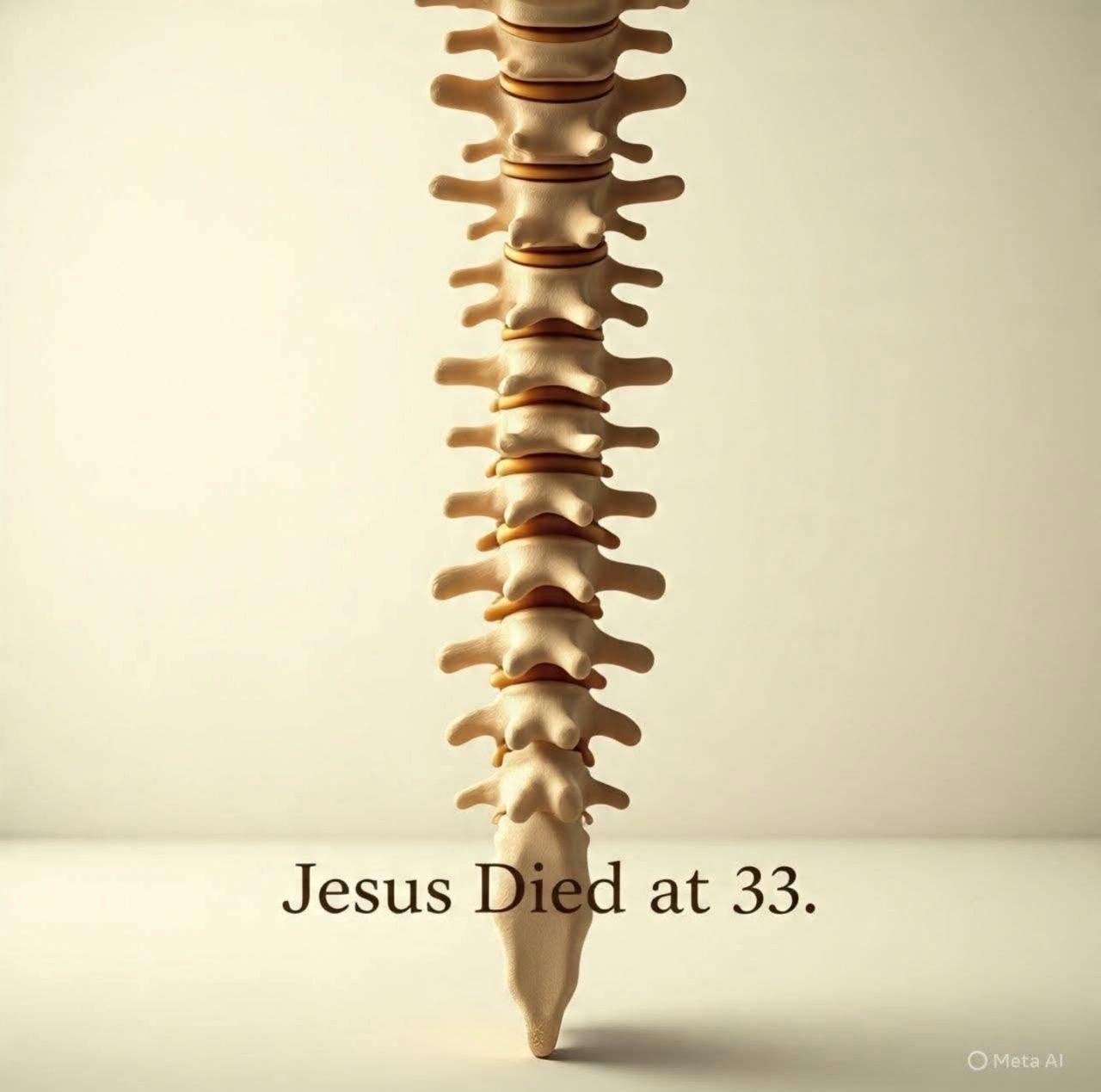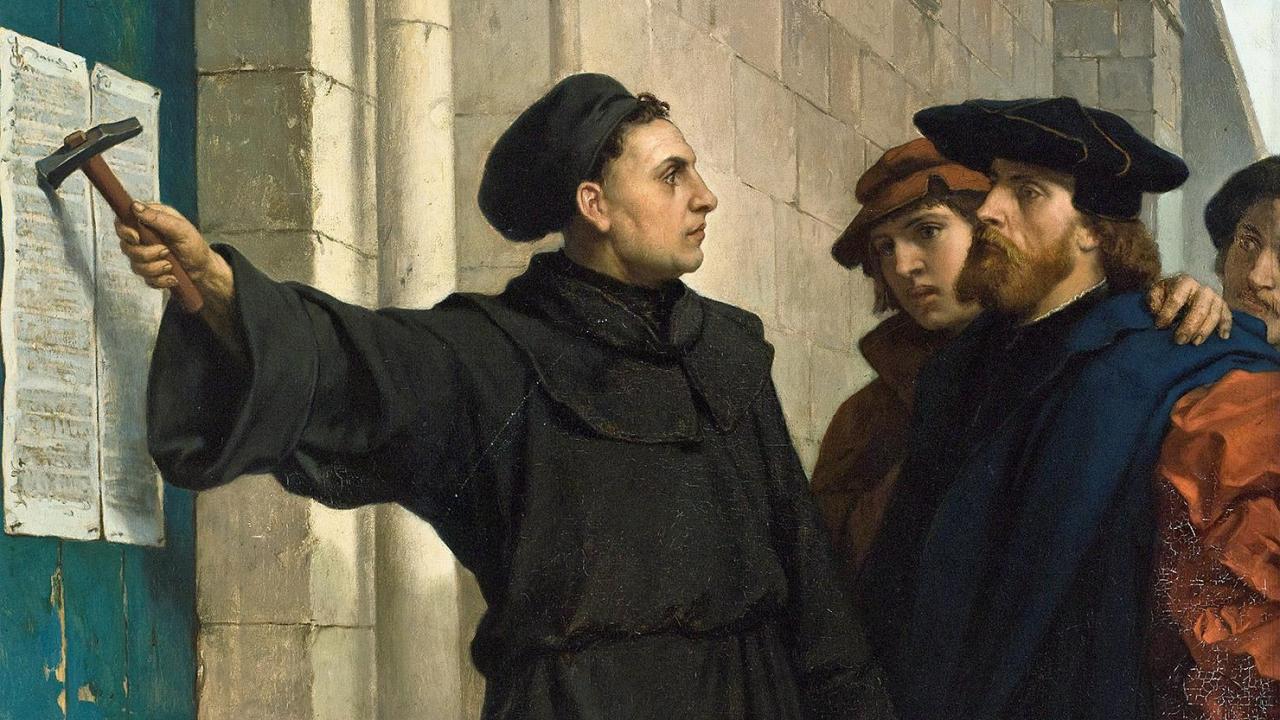Is Halloween a Pagan Holiday?

It's that time of year when you begin to see various articles and debates online about Hallowe'en, and whether it's entirely pagan in origin and the Church "stole it"; or if it's something that Christians should even have any part in.
Table of Contents
To some people, the answer is a straightforward “no”, while others say it falls into the realm of Christian freedom and personal discernment. But what about if you're unsure or somewhere in the middle of those two positions, how should you decide what is the right thing to do?
We can all see that the modern celebration of Halloween is focused quite heavily on darkness and evil beings. Here in the UK, it's not quite so prevalent; it seems more like an excuse for adults to dress up and have a party as much as the kids do (although with more alcohol involved). American society has really taken the holiday to its extremes with some of the decorations I've seen online and on TV and in films, to the point that suicide and murder victims left in public view have been mistaken for scary props!
Origins of the holiday
Has Hallowe'en always been like this though? Let's take a look at its origins to see where this holiday comes from to help us decide whether we should partake or not.
Did you know that Hallowe'en actually started out as a Christian holiday (Holy Day)? “Hallowe’en”, or more precisely, All Hallows Eve (from the Old English hallowed meaning “holy”), is an ancient holiday in the Christian calendar to mark the day before All Saints Day on November 1st.
All Saints Day is a day to celebrate and remember the martyrs and all those who have died and gave their lives for the Faith. Originally, this yearly festival began in the 7th century when Pope Boniface IV consecrated the Pantheon, a Roman temple to the gods. This then became a church called St. Mary of the Martyrs, and the date of the consecration, May 13th, was to be celebrated annually thereafter as the Feast of the Holy Martyrs. This was then later changed to November 1st by Pope Gregory IV in 835 AD to commemorate the dedication of St. Peter's Basilica in Rome to all of the saints. The feast day was then extended and made universal to include all the saints who had died, not just martyrs since there had become too many to individually commemorate. And thus, All Saints Day was born.
This isn't even the earliest time that martyrs were remembered as a formal event, as the practice goes way back to at least 135 AD which we can read about in the Martyrdom of Polycarp. In this text, the believers are said to treat the bones of Polycarp as “more precious than the most exquisite jewels, and more purified than gold”.
The next reference comes around 250 AD. In Epistle 36 of Cyprian, he states that the Church should take note of the days on which the martyrs are killed:
Finally, also, take note of their days on which they depart, that we may celebrate their commemoration among the memorials of the martyrs … there are celebrated here by us oblations and sacrifices for their commemorations
There are also other early references to this practice in sermons by Ephrem the Syrian (373 AD) and John Chrysostom (407 AD), so we can see from the existing historical documents that celebrating the lives of martyrs and “saints” has been long observed within the Church, with the first record being in what is now modern-day Turkey.
Aren’t there pagan roots?
There are often a lot of references to Hallowe'en being an ancient Celtic festival of Samhain (pronounced Sow-in, a Gaelic word meaning “end of the summer”), originating in Ireland over 2000 years ago. The story goes that this was always the time when the Celts celebrated their dead, and as Christianity spread, the Pope “replaced” the pagan festival with a “Christianised” version to try and convert people easier. But there are a few issues with this version of events, and the historical timeline that it’s meant to follow.
For starters, if it truly were an ancient Celtic festival, then the historical documents we have from the early Church should show that the initial celebrations of All Hallows Eve/Saint Day originated in Irish and Celtic-populated countries. The ancient documents we looked at previously by Cyprian and about Polycarp et al. show us that these practices began in the area of Turkey and Syria, even if not widespread at the time. By the Middle Ages, the Pope was declaring this a Church-wide festival in May, which began in Rome (and again when the date was moved to November 1st). So we can see even from a brief look at history, Hallowe’en celebrations originally had nothing to do with anything remotely Celtic.
As far as Irish and Celtic origins go, we have still in existence a few Irish sources from around 830 AD which tell us that there was a feast “of all the Saints of the whole of Europe” on April 20th (Martyrology of Tallaght) This should offer us some evidence that the Irish Christians celebrated All Saints Day (and the eve before) around the time of the original decree by Pope Boniface IV, as the news of the new date of November 1st had yet to reach Ireland from Rome. Plus there’s also evidence that the name “Samhain” didn’t appear until the 10th century in Irish folklore (Ronald Hutton’s 1996 book Stations of the Sun: A History of the Ritual Year in Britain).
In another book, Halloween: From Pagan Ritual to Party Night, by Nicholas Rogers, he states that:
Festivals commemorating the saints as opposed to the original Christian martyrs appear to have been observed by 800. In England and Germany, this celebration took place on 1st November. In Ireland, it was commemorated on 20th April, a chronology that contradicts the widely held view that the November date was chosen to Christianize the festival of Samhain. (p.22)
Hopefully, by this point, you can begin to see that any supposed pagan connection to the original Christian celebration, and remembrance of the martyrs and saints, is either completely fabricated to discredit the Church, or is entirely coincidental. To read a more in-depth overview of the history of these events, I recommend this article by a Lutheran pastor, Joseph Abrahamson: Hallowe’en: A short history. If you are here and aren't a Christian and feel like I'm being biased, then I would also like to recommend this article from atheist Tim O’Neill's "History for Atheists" website: Is Halloween Pagan? - History for Atheists.
What about “Trick or Treat”, costumes and pumpkins?
These aspects of the Hallowe’en festivities do have a mixed history, with some coming from the Christian tradition in the Middle Ages, to others being older, Irish folktales.
Trick or treating comes from an old Middle Ages tradition called “Souling”, where children or poor families would go around knocking on people’s houses offering prayers for their departed (who were assumed to be in Purgatory), in exchange for “Soul cakes” – which were essentially doughnuts. This was common all year round for the poor, but obviously more popular during holiday times, and was often accompanied by a song or poem as well as prayers.
Carving vegetables goes back to older times, but it was usually a turnip made into a lantern, not a pumpkin. There is apparently an old Irish legend about a man named Jack in connection to pumpkins (hence, “Jack o’lantern”), though the connection to Halloween is much more recent. The same for dressing up in costumes, haunted houses and the phrase “trick or treat”. All of these things originated in the early 20th century and eventually become commercialised throughout America and Britain, ingraining themselves firmly into society.
Hallowe’en then, as a holiday of dressing up as something ghoulish, carving faces into pumpkins, and trying to scare people in return for some sweet treats, is all a relatively secular and modern invention, with the more supernatural aspects hijacked by neo-paganism and claimed to be the older and ancient practices.
In conclusion
If you're going to church on Oct 31st and/or Nov 1st to light candles in remembrance of the dead and to celebrate the lives of martyrs who gave their lives for the Faith, then great — you are keeping within the ancient Christian tradition. But if you are dressing up as ghouls and depictions of evil and darkness, celebrating death over life, then you are partaking in something contrary to Christ and wholly secular, with possible pagan undertones.
If we are to have anything to do with the modern/secular version of Hallowe’en, then it should be as an opportunity to share the Gospel and be a light on a night of darkness, giving out the Good News rather than trying to scare people, sowing seeds of Truth rather than tooth decay.
As an alternative, October 31st is also Reformation Day, as it marks the day in which Martin Luther nailed his 95 Theses to the Wittenberg Castle church doors in 1517, and this year (2017) marks the 500th Anniversary of the Reformation. So if you’re Protestant, you can always celebrate that instead.
For “what fellowship does light have with darkness?” (2 Cor 6:14). We should do what we can to be “in the world, not of it” (Jn 17:14-16) and to “abstain from every form of evil.” (1 Thessalonians 5:22) so that we may be a good witness to the eternal life that Jesus has given us, that victory over death and evil!
Have something to add to this? Leave a comment below.
Further Reading/Sources:
- Redeeming Holy Days from Pagan Lies — Hallowe’en: A short history (steadfastlutherans.org)
- Is Halloween Pagan? - History for Atheists
- BBC - Religions - Christianity: All Hallows' Eve
- BBC - Religions - Christianity: All Saints' Day and All Souls' Day
- All Hallow's Eve (catholiceducation.org)
- History of Halloween: Where All Hallow's Eve comes from and why we celebrate the date | Metro News
- Purgatory 101: Everything You Wanted To Know About Purgatory - D.J. Cyprich - Google Books, pp.35-36
- Christian Roots: All Saints' Day and All Souls' Day | HowStuffWorks
- All Saints Day | History, Customs, Meaning, Images (prayerist.com)
- The Church and Halloween: Satan the Defeated Enemy - Faithlife Sermons
- Hennig, John. "BRITAIN'S PLACE IN THE EARLY IRISH MARTYROLOGIES" Medium Ævum, vol. 26, no. 1, 1957, pp. 17–24. JSTOR.
- Gregory IV | pope | Britannica
- Halloween: From Pagan Ritual to Party Night - Nicholas Rogers - Google Books, p.22
- Martin Luther and the 95 Theses - Summary, Origins & Video - HISTORY
- Martin Luther's 95 Theses
- CHURCH FATHERS: Epistle 36 (Cyprian of Carthage) (newadvent.org)
- Murdered Woman's Body Hanging on Fence Was Mistaken for Halloween Decoration (people.com)
- Corpse mistaken for Halloween decoration (nbcnews.com)
Leave a comment Like Back to Top Seen 4.7K times Liked 1 times
Enjoying this content?
Support my work by becoming a patron on Patreon!
By joining, you help fund the time, research, and effort that goes into creating this content — and you’ll also get access to exclusive perks and updates.
Even a small amount per month makes a real difference. Thank you for your support!
Subscribe to Updates
If you enjoyed this, why not subscribe to free email updates and join over 864 subscribers today!
My new book is out now! Order today wherever you get books
Recent Posts
Luke J. Wilson | 19th August 2025 | Fact-Checking
A poetic post has been circulating widely on Facebook, suggesting that our anatomy mirrors various aspects of Scripture. On the surface it sounds inspiring, but when we take time to weigh its claims, two main problems emerge. The viral post circulating on Facebook [Source] First, some of its imagery unintentionally undermines the pre-existence of Christ, as if Jesus only “held the earth together” for the 33 years of His earthly life. Second, it risks reducing the resurrection to something like biological regeneration, as if Jesus simply restarted after three days, instead of being raised in the miraculous power of God. Alongside these theological dangers, many of the scientific claims are overstated or symbolic rather than factual. Let’s go through them one by one. 1. “Jesus died at 33. The human spine has 33 vertebrae. The same structure that holds us up is the same number of years He held this Earth.” The human spine does generally have 33 vertebrae, but that number includes fused bones (the sacrum and coccyx), and not everyone has the same count. Some people have 32 or 34. More importantly, the Bible never says Jesus was exactly 33 when He died — Luke tells us He began His ministry at “about thirty” (Luke 3:23), and we know His public ministry lasted a few years, but His precise age at death is a tradition, not a biblical statement. See my other recent article examining the age of Jesus here. Theologically, the phrase “the same number of years He held this Earth” is problematic. Jesus did not hold the world together only for 33 years. The eternal Word was with God in the beginning (John 1:1–3), and “in Him all things hold together” (Colossians 1:17). Hebrews says He “sustains all things by His powerful word” (Hebrews 1:3). He has always upheld creation, before His incarnation, during His earthly ministry, and after His resurrection. To imply otherwise is to risk undermining the pre-existence of Christ. 2. “We have 12 ribs on each side. 12 disciples. 12 tribes of Israel. God built His design into our bones.” Most people do have 12 pairs of ribs, though some are born with an extra rib, or fewer. The number 12 is certainly biblical: the 12 tribes of Israel (Genesis 49), the 12 apostles (Matthew 10:1–4), and the 12 gates and foundations of the New Jerusalem (Revelation 21). But there’s no biblical connection between rib count and these symbolic twelves. This is a case of poetic association, not design woven into our bones. The only real mention of ribs in Scripture is when Eve is created from one of Adam’s ribs in Genesis 2:21–22, which has often led to the teaching in some churches that men have one less rib than women (contradicting this new claim)! 3. “The vagus nerve runs from your brain to your heart and gut. It calms storms inside the body. It looks just like a cross.” The vagus nerve is real and remarkable. It regulates heart rate, digestion, and helps calm stress, and doctors are even using vagus nerve stimulation as therapy for epilepsy, depression, and inflammation showing it really does “calm storms” in the body. But it does not look like a cross anatomically. The language about “calming storms” may echo the way Jesus calmed the storm on the Sea of Galilee (Mark 4:39), but here again the poetic flourish stretches science (and Scripture) beyond what’s accurate. 4. “Jesus rose on the third day. Science tells us that when you fast for 3 days, your body starts regenerating. Old cells die. New ones are born. Healing begins. Your body literally resurrects itself.” There’s a serious theological problem here. To equate Jesus’ resurrection with a biological “regeneration” after fasting is to misrepresent what actually happened. Fasting can indeed trigger cell renewal and immune repair, but it cannot bring the dead back to life. It’s still a natural process that happens...
Luke J. Wilson | 08th July 2025 | Islam
“We all worship the same God”. Table of Contents 1) Where YHWH and Allah Appear Similar 2) Where Allah’s Character Contradicts YHWH’s Goodness 3) Where Their Revelations Directly Contradict Each Other 4) YHWH’s Love for the Nations vs. Allah’s Commands to Subjugate 5) Can God Be Seen? What the Bible and Qur’an Say 6) Salvation by Grace vs. Salvation by Works Conclusion: Same God? Or Different Revelations? You’ve heard it from politicians, celebrities, and even some pastors. It’s become something of a modern mantra, trying to shoehorn acceptance of other beliefs and blend all religions into one, especially the Abrahamic ones. But what if the Bible and Qur’an tell different stories? Let’s see what their own words reveal so you can judge for yourself. This Tweet recently caused a stir on social media 1) Where YHWH and Allah Appear Similar Many point out that Jews, Christians, and Muslims share a belief in one eternal Creator God. That’s true — up to a point. Both the Bible and Qur’an describe God as powerful, all-knowing, merciful, and more. Here’s a list comparing some of the common shared attributes between YHWH and Allah, with direct citations from both Scriptures: 26 Shared Attributes of YHWH and Allah According to the Bible (NRSV) and the Qur’an Eternal YHWH: “From everlasting to everlasting you are God.” — Psalm 90:2 Allah: “He is the First and the Last…” — Surah 57:3 Creator YHWH: “In the beginning God created the heavens and the earth.” — Genesis 1:1 Allah: “The Originator of the heavens and the earth…” — Surah 2:117 Omnipotent (All-Powerful) YHWH: “Nothing is too hard for you.” — Jeremiah 32:17 Allah: “Allah is over all things competent.” — Surah 2:20 Omniscient (All-Knowing) YHWH: “Even before a word is on my tongue, O LORD, you know it.” — Psalm 139:4 Allah: “He knows what is on the land and in the sea…” — Surah 6:59 Omnipresent (Present Everywhere) YHWH: “Where can I go from your Spirit?” — Psalm 139:7–10 Allah: “He is with you wherever you are.” — Surah 57:4 Holy YHWH: “Holy, holy, holy is the LORD of hosts.” — Isaiah 6:3 Allah: “The Holy One (Al-Quddus).” — Surah 59:23 Just YHWH: “A God of faithfulness and without injustice.” — Deuteronomy 32:4 Allah: “Is not Allah the most just of judges?” — Surah 95:8 Merciful YHWH: “The LORD, merciful and gracious…” — Exodus 34:6 Allah: “The Most Gracious, the Most Merciful.” — Surah 1:1 Compassionate YHWH: “As a father has compassion on his children…” — Psalm 103:13 Allah: “He is the Forgiving, the Affectionate.” — Surah 85:14 Faithful YHWH: “Great is your faithfulness.” — Lamentations 3:22–23 Allah: “Indeed, the promise of Allah is truth.” — Surah 30:60 Unchanging YHWH: “For I the LORD do not change.” — Malachi 3:6 Allah: “None can change His words.” — Surah 6:115 Sovereign YHWH: “The LORD has established his throne in the heavens…” — Psalm 103:19 Allah: “Blessed is He in whose hand is dominion…” — Surah 67:1 Loving YHWH: “God is love.” — 1 John 4:8 Allah: “Indeed, my Lord is Merciful and Affectionate (Al-Wadud).” — Surah 11:90 Forgiving YHWH: “I will not remember your sins.” — Isaiah 43:25 Allah: “Allah forgives all sins…” — Surah 39:53 Wrathful toward evil YHWH: “The LORD is a jealous and avenging God…” — Nahum 1:2 Allah: “For them is a severe punishment.” — Surah 3:4 One/Unique YHWH: “The LORD is one.” — Deuteronomy 6:4 Allah: “Say: He is Allah, One.” — Surah 112:1 Jealous of worship YHWH: “I the LORD your God am a jealous God.” �...
Luke J. Wilson | 05th June 2025 | Blogging
As we commemorated the 500th anniversary of the Protestant Reformation this year, the familiar image of Martin Luther striding up to the church door in Wittenberg — hammer in hand and fire in his eyes — has once again taken centre stage. It’s a compelling picture, etched into the imagination of many. But as is often the case with historical legends, closer scrutiny tells a far more nuanced and thought-provoking story. The Myth of the Door: Was the Hammer Ever Raised? Cambridge Reformation scholar Richard Rex is one among several historians who have challenged the romanticised narrative. “Strangely,” he observes, “there’s almost no solid evidence that Luther actually went and nailed them to the church door that day, and ample reasons to doubt that he did.” Indeed, the first image of Luther hammering up his 95 Theses doesn’t appear until 1697 — over 180 years after the fact. Eric Metaxas, in his recent biography of Luther, echoes Rex’s scepticism. The earliest confirmed action we can confidently attribute to Luther on 31 October 1517 is not an act of public defiance, but the posting of two private letters to bishops. The famous hammer-blow may never have sounded at all. Conflicting Accounts Philip Melanchthon, Luther’s successor and first biographer, adds another layer of complexity. He claimed Luther “publicly affixed” the Theses to the door of All Saints’ Church, but Melanchthon wasn’t even in Wittenberg at the time. Moreover, Luther himself never mentioned posting the Theses publicly, even when recalling the events years later. Instead, he consistently spoke of writing to the bishops, hoping the matter could be addressed internally. At the time, it was common practice for a university disputation to be announced by posting theses on church doors using printed placards. But no Wittenberg-printed copies of the 95 Theses survive. And while university statutes did require notices to be posted on all church doors in the city, Melanchthon refers only to the Castle Church. It’s plausible Luther may have posted the Theses later, perhaps in mid-November — but even that remains uncertain. What we do know is that the Theses were quickly circulated among Wittenberg’s academic elite and, from there, spread throughout the Holy Roman Empire at a remarkable pace. The Real Spark: Ink, Not Iron If there was a true catalyst for the Reformation, it wasn’t a hammer but a printing press. Luther’s Latin theses were swiftly reproduced as pamphlets in Basel, Leipzig, and Nuremberg. Hundreds of copies were printed before the year’s end, and a German translation soon followed, though it may never have been formally published. Within two weeks, Luther’s arguments were being discussed across Germany. The machinery of mass communication — still in its relative infancy — played a pivotal role in what became a theological, political, and social upheaval. The Letters of a Conscientious Pastor Far from the bold revolutionary of popular imagination, Luther appears in 1517 as a pastor deeply troubled by the abuse of indulgences, writing with respectful concern to those in authority. In his letter to Archbishop Albrecht of Mainz, he humbly addresses the archbishop as “Most Illustrious Prince,” and refers to himself as “the dregs of humanity.” “I, the dregs of humanity, have so much boldness that I have dared to think of a letter to the height of your Sublimity,” he writes — hardly the voice of a man trying to pick a fight. From Whisper to Roar Luther’s initial appeal through formal channels was, predictably, ignored. He was advised not to make trouble. But as opposition mounted and corruption remained unchecked, the once quiet reformer grew louder. His theological convictions deepened, and his public persona evolved. The lion did eventually roar — but not on October 31. A Catholic Reformer, Not a Protestant Founder It’s vital to remem...
Luke J. Wilson | 20th May 2025 | Islam
You are not alone. Around the world, many Muslims — people who already believe in one God, pray, and seek to live righteously — are drawn to know more about Jesus (ʿĪsā in Arabic). Some have heard He is more than a prophet. Some have sensed His presence in a dream or vision. And some simply long to know God more deeply, personally, and truly. So what does it mean to become a Christian? And how can you take that step? This guide is for you. 1. What Christians Believe About God and Jesus ➤ One God, Eternal and Good Christians believe in one God — the same Creator known to Abraham, Moses, and the prophets. But we also believe God is more personal and relational than many realise. In His love, He has revealed Himself as Father, Son (Jesus), and Holy Spirit — not three gods, but one God in three persons. ➤ Jesus Is More Than a Prophet Muslims honour Jesus as a great prophet, born of the virgin Mary. Christians also affirm this — but go further. The Bible teaches that Jesus is the Word of God (Kalimat Allāh), who became flesh to live among us. He performed miracles, healed the sick, raised the dead — and lived without sin.Jesus came not just to teach but to save — to bring us back to God by bearing our sins and rising again in victory over death. 2. Why Do We Need Saving? ➤ The Problem: Sin All people — no matter their religion — struggle with sin. We lie, get angry, feel jealous, act selfishly, or fail to love God fully. The Bible says: “All have sinned and fall short of the glory of God.” (Romans 3:23) Sin separates us from God. And no matter how many good deeds we do, we can never make ourselves perfect or holy before Him. ➤ The Solution: Jesus Because God loves us, He did not leave us in our sin. He sent Jesus, His eternal Word, to live as one of us. Jesus died willingly, offering His life as a sacrifice for our sins, then rose again on the third day. “But God proves his love for us in that while we still were sinners Christ died for us.” (Romans 5:8) 3. How Do I Become a Christian? Becoming a Christian is not about joining a Western religion. It’s about entering a relationship with God through faith in Jesus Christ. Here is what the Bible says: ✝️ 1. Believe in Jesus Believe that Jesus is the Son of God, that He died for your sins, and that He rose again. “If you confess with your lips that Jesus is Lord and believe in your heart that God raised him from the dead, you will be saved.” (Romans 10:9) 💔 2. Repent of Your Sins Turn away from sin and ask God to forgive you. This is called repentance. It means being truly sorry and choosing a new way. “Repent therefore, and turn to God so that your sins may be wiped out.” (Acts 3:19) 💧 3. Be Baptised Jesus commands His followers to be baptised in water as a sign of their new life. Baptism represents washing away your old life and rising into a new one with Jesus. “Repent and be baptised every one of you in the name of Jesus Christ so that your sins may be forgiven.” (Acts 2:38) 🕊️ 4. Receive the Holy Spirit When you believe in Jesus, God gives you the Holy Spirit to live within you, guiding you, comforting you, and helping you follow His will. “You received the Spirit of adoption, by whom we cry, ‘Abba! Father!’” (Romans 8:15) 🧎 5. Begin a New Life As a Christian, you are born again — spiritually renewed. You begin to grow in faith, love, and holiness. You read the Bible, pray, fast, and gather with other believers. Your life is no longer your own; you now live for God. 4. What Does a Christian Life Look Like? Jesus said: “If anyone wants to become my followers, let them deny themselves and take up their cross and follow me.” (Matthew 16:24) This means: Loving God with all your heart Loving your neighbour — even your enemies Forgiving others ...






